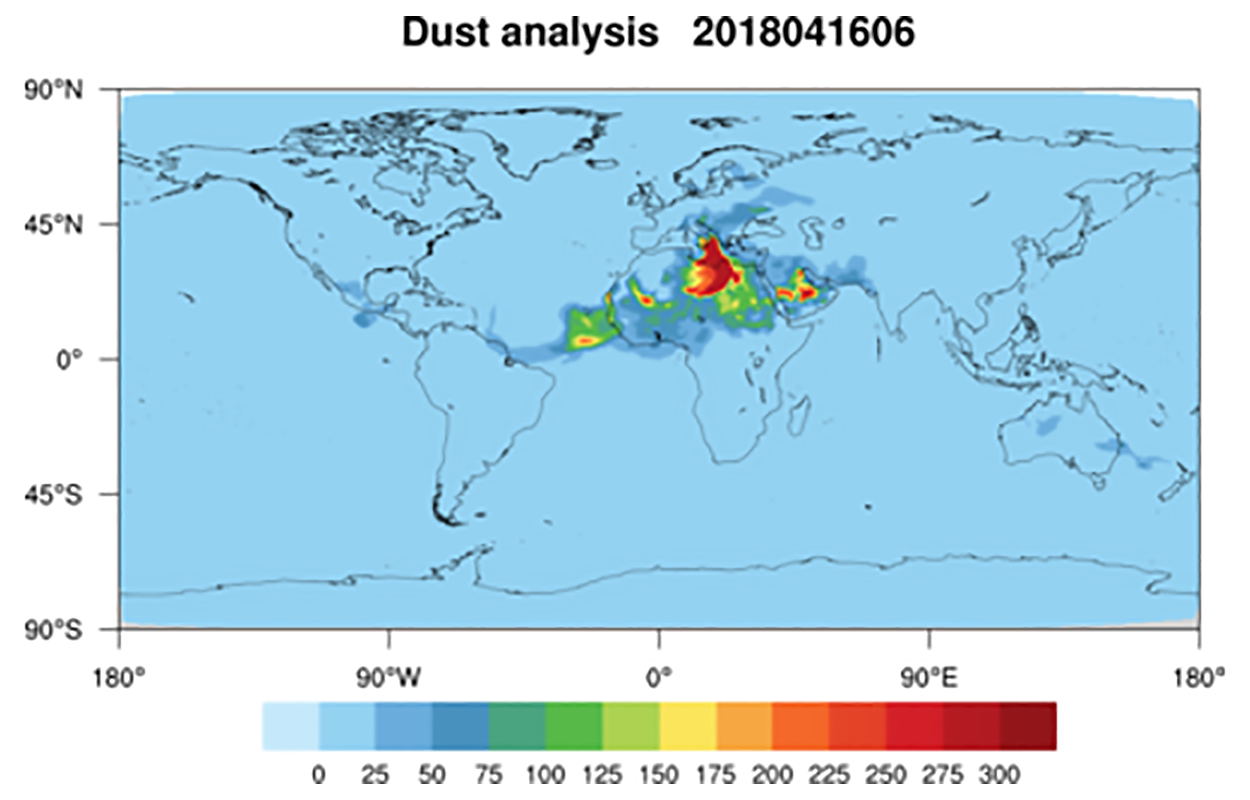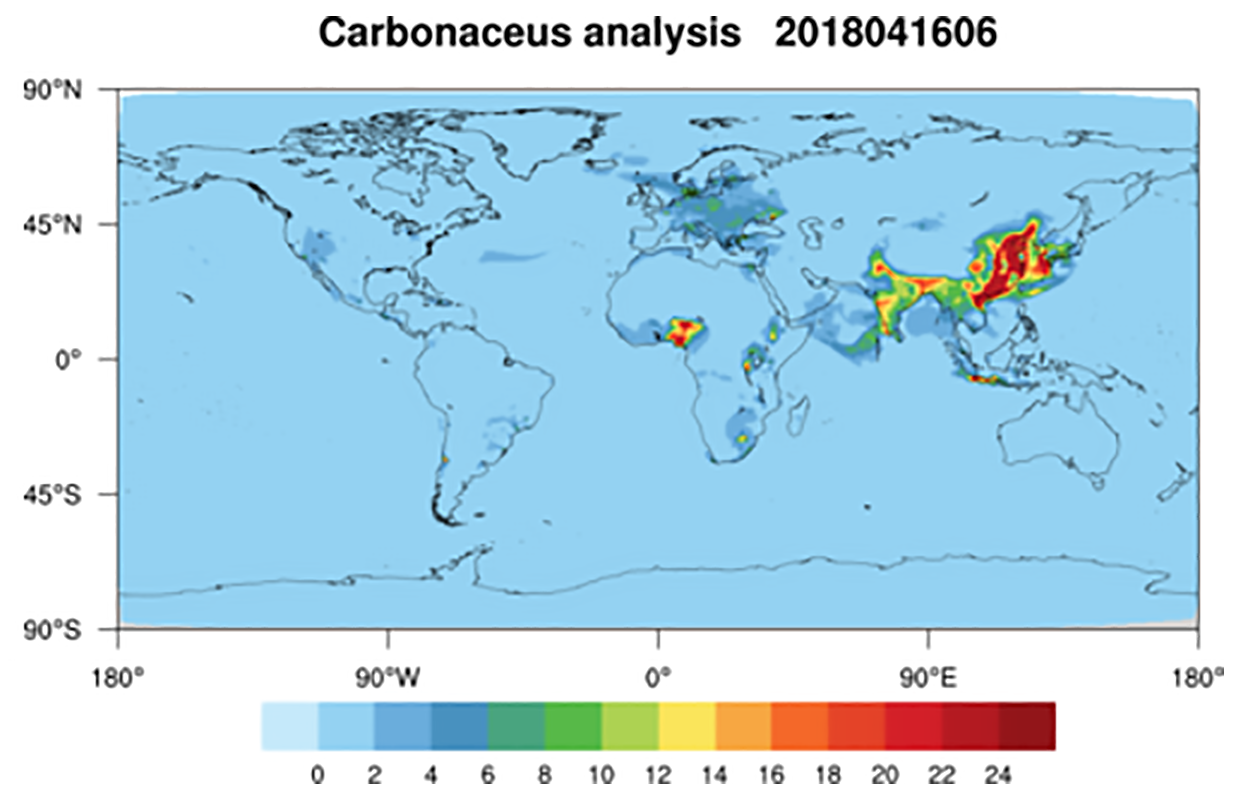Early Adopter

Applied Research Topic
Potential Applications ► Prediction of global aerosols to study impact on weather and climate
Description
NOAA is investing in its national capability to globally predict air quality and the presence of pollutants and aerosols in the atmosphere by developing and improving the aerosol reanalysis and forecasting capabilities of the FV3-GF5/GOCART model by developing and implementing a JEDI data assimilation framework. This hybrid ensemble-variational approach assimilation system will improve the ability of NOAA to estimate aerosols states and study their impacts on weather and climate.Significance
Fine aerosols, those with diameters smaller than 2.5 microns, contribute to urban smog and are the most important factor affecting human mortality due to air pollution. Aerosols of this size also affect atmospheric radiation and cloud processes thus impact weather and climate.Why PACE
Aerosol products retrieved by the PACE Ocean Color Instrument and onboard multi-angle polarimeters will constrain aerosol species concentrations within the model, and PACE will provide information to the model regarding the vertical distributions of these aerosols in the atmosphere.End User(s)
NOAA Climate Prediction Office: Modeling, Analysis, Predictions, and Projections ProgramNOAA Office of Weather and Air Quality
SAT Partner(s)
Snorre StamnesJacek Chowdhary
Lorraine Remer
Publications
Bocquet, M., H. Elbern, H. Eskes, M. Hirtl, R. Žabkar, G. R. Carmichael, J. Flemming, A. Inness, M. Pagowski, J. L. Pérez Camaño, P. E. Saide, R. San Jose, M. Sofiev, J. Vira, A. Baklanov, C. Carnevale, G. Grell, and C. Seigneur (2015). Data Assimilation in Atmospheric Chemistry Models: Current Status and Future Prospects for Coupled Chemistry Meteorology Models. Atmospheric Chemistry and Physics, 15, 5325-5358, DOI: https://doi.org/10.5194/acp-15-5325-2015.
M. Pagowski, and G. A. Grell (2012). Experiments with the Assimilation of Fine Aerosols using an Ensemble Kalman Filter, Journal of Geophysical Research, 117, D21302, DOI: https://doi.org/10.1029/2012JD018333.
M. Pagowski, G.A. Grell, S.A. McKeen, S. Peckham, D. Devenyi (2010). Three-Dimensional Variational Data Assimilation of Ozone and Fine Particulate Matter observations. Some Results Using the Weather Research and Forecasting - Chemistry model and Gridpoint Statistical Interpolation', Quarterly Journal of the Royal Meteorological Society, 136, 2013--2024. DOI: https://doi.org/10.1002/qj.700.




